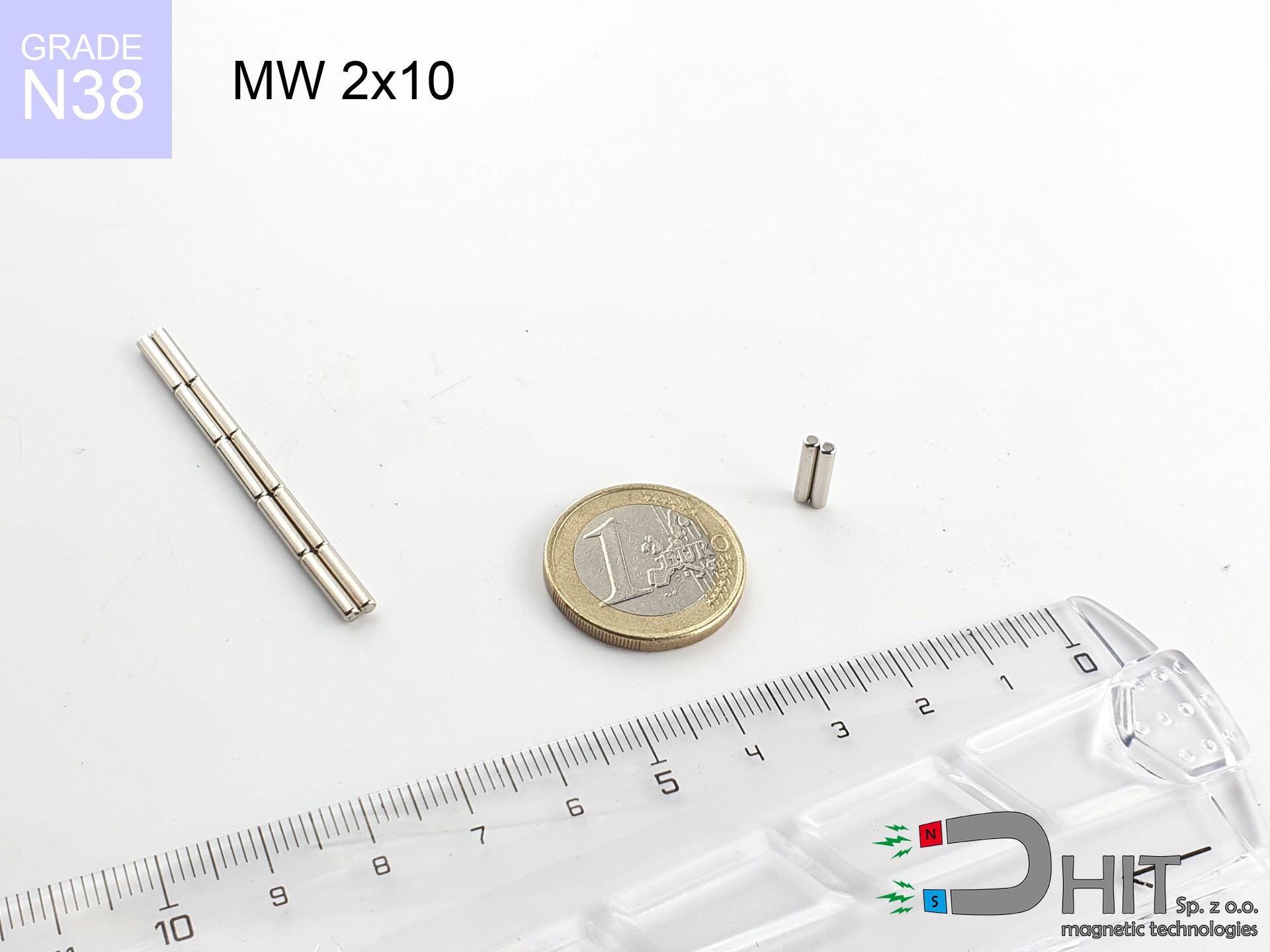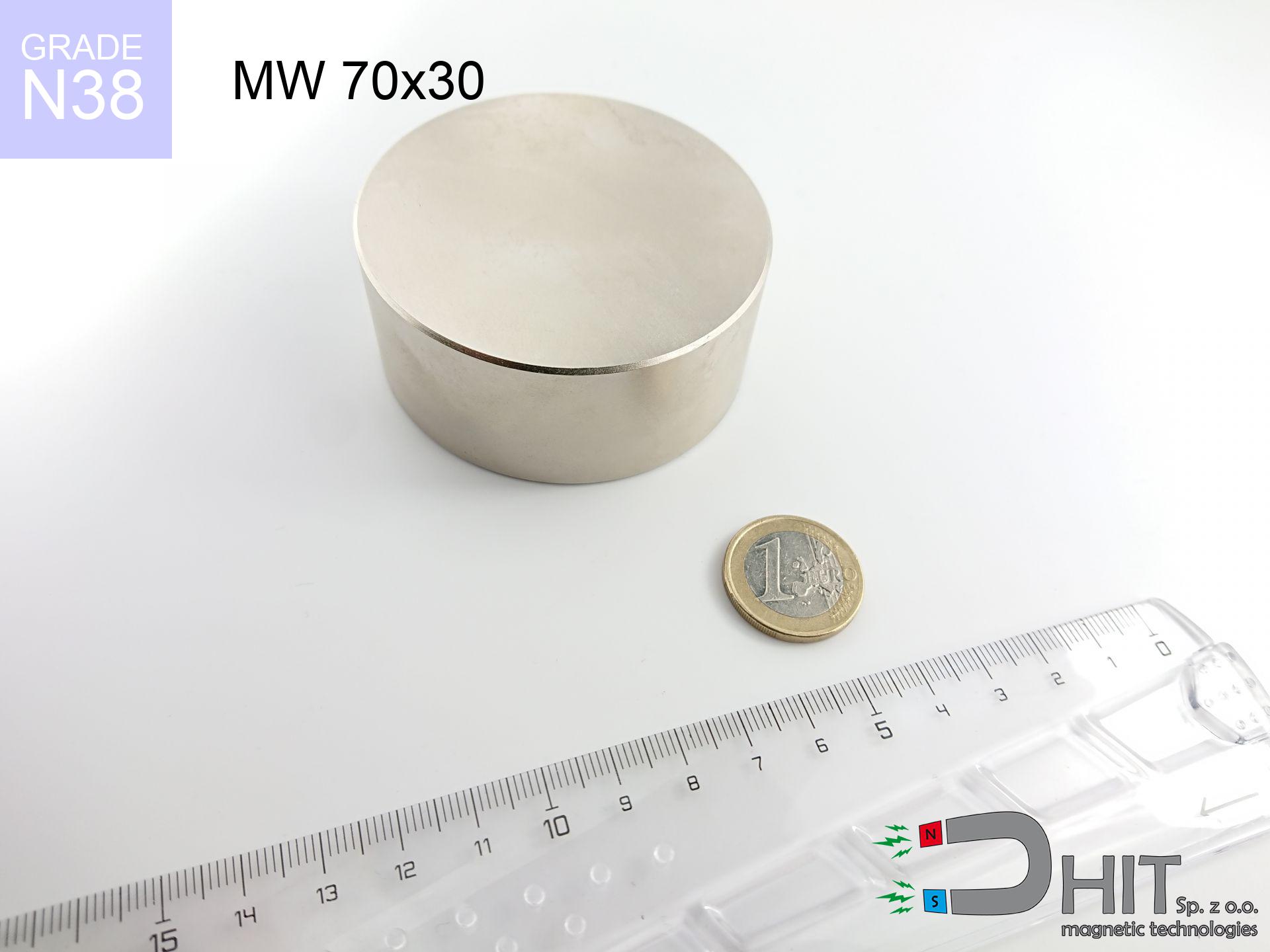SM 32x150 [2xM8] / N52 - magnetic separator
magnetic separator
Catalog no 130358
GTIN/EAN: 5906301813064
Diameter Ø
32 mm [±1 mm]
Height
150 mm [±1 mm]
Weight
830 g
Magnetic Flux
~ 10 000 Gauss [±5%]
528.90 ZŁ with VAT / pcs + price for transport
430.00 ZŁ net + 23% VAT / pcs
bulk discounts:
Need more?
Call us now
+48 888 99 98 98
alternatively get in touch via
inquiry form
the contact page.
Lifting power and form of neodymium magnets can be checked using our
force calculator.
Order by 14:00 and we’ll ship today!
Technical data of the product - SM 32x150 [2xM8] / N52 - magnetic separator
Specification / characteristics - SM 32x150 [2xM8] / N52 - magnetic separator
| properties | values |
|---|---|
| Cat. no. | 130358 |
| GTIN/EAN | 5906301813064 |
| Production/Distribution | Dhit sp. z o.o. |
| Country of origin | Poland / China / Germany |
| Customs code | 85059029 |
| Diameter Ø | 32 mm [±1 mm] |
| Height | 150 mm [±1 mm] |
| Weight | 830 g |
| Material Type | Stainless steel AISI 304 / A2 |
| Magnetic Flux | ~ 10 000 Gauss [±5%] |
| Size/Mount Quantity | 2xM8 |
| Polarity | circumferential - 5 poles |
| Casing Tube Thickness | 1 mm |
| Manufacturing Tolerance | ±1 mm |
Magnetic properties of material N52
| properties | values | units |
|---|---|---|
| remenance Br [min. - max.] ? | 14.2-14.7 | kGs |
| remenance Br [min. - max.] ? | 1420-1470 | mT |
| coercivity bHc ? | 10.8-12.5 | kOe |
| coercivity bHc ? | 860-995 | kA/m |
| actual internal force iHc | ≥ 12 | kOe |
| actual internal force iHc | ≥ 955 | kA/m |
| energy density [min. - max.] ? | 48-53 | BH max MGOe |
| energy density [min. - max.] ? | 380-422 | BH max KJ/m |
| max. temperature ? | ≤ 80 | °C |
Physical properties of sintered neodymium magnets Nd2Fe14B at 20°C
| properties | values | units |
|---|---|---|
| Vickers hardness | ≥550 | Hv |
| Density | ≥7.4 | g/cm3 |
| Curie Temperature TC | 312 - 380 | °C |
| Curie Temperature TF | 593 - 716 | °F |
| Specific resistance | 150 | μΩ⋅cm |
| Bending strength | 250 | MPa |
| Compressive strength | 1000~1100 | MPa |
| Thermal expansion parallel (∥) to orientation (M) | (3-4) x 10-6 | °C-1 |
| Thermal expansion perpendicular (⊥) to orientation (M) | -(1-3) x 10-6 | °C-1 |
| Young's modulus | 1.7 x 104 | kg/mm² |
Table 1: Rod construction
SM 32x150 [2xM8] / N52
| Parameter | Value | Description / Unit |
|---|---|---|
| Diameter (Ø) | 32 | mm |
| Total length | 150 | mm (L) |
| Active length | 114 | mm |
| Section count | 4 | modules |
| Dead zone | 36 | mm (2x 18mm starter) |
| Weight (est.) | ~917 | g |
| Active area | 115 | cm² (Area) |
| Housing material | AISI 304 | 1.4301 (Inox) |
| Surface finish | Ra < 0.8 µm | Polished |
| Temp. class | 80°C | Standard (N) |
| Force loss (at max °C) | -12.8% | Reversible loss (physics) |
| Force (calculated) | 41 | kg (theor.) |
| Induction (surface) | ~10 000 | Gauss (Max) |
Chart 2: Field profile (4 sections)
Chart 3: Temperature performance
Elemental analysis
| iron (Fe) | 64% – 68% |
| neodymium (Nd) | 29% – 32% |
| boron (B) | 1.1% – 1.2% |
| dysprosium (Dy) | 0.5% – 2.0% |
| coating (Ni-Cu-Ni) | < 0.05% |
Environmental data
| recyclability (EoL) | 100% |
| recycled raw materials | ~10% (pre-cons) |
| carbon footprint | low / zredukowany |
| waste code (EWC) | 16 02 16 |
Other proposals
Advantages and disadvantages of neodymium magnets.
Advantages
- They do not lose magnetism, even after nearly ten years – the drop in lifting capacity is only ~1% (based on measurements),
- They are noted for resistance to demagnetization induced by external magnetic fields,
- In other words, due to the glossy layer of nickel, the element becomes visually attractive,
- Magnetic induction on the top side of the magnet is extremely intense,
- Due to their durability and thermal resistance, neodymium magnets are capable of operate (depending on the shape) even at high temperatures reaching 230°C or more...
- Due to the possibility of free forming and adaptation to unique needs, neodymium magnets can be manufactured in a broad palette of geometric configurations, which makes them more universal,
- Huge importance in future technologies – they are used in data components, electric drive systems, diagnostic systems, as well as multitasking production systems.
- Relatively small size with high pulling force – neodymium magnets offer strong magnetic field in tiny dimensions, which enables their usage in compact constructions
Disadvantages
- At very strong impacts they can break, therefore we recommend placing them in strong housings. A metal housing provides additional protection against damage and increases the magnet's durability.
- Neodymium magnets decrease their power under the influence of heating. As soon as 80°C is exceeded, many of them start losing their force. Therefore, we recommend our special magnets marked [AH], which maintain stability even at temperatures up to 230°C
- When exposed to humidity, magnets usually rust. For applications outside, it is recommended to use protective magnets, such as those in rubber or plastics, which prevent oxidation as well as corrosion.
- Due to limitations in creating nuts and complicated shapes in magnets, we recommend using casing - magnetic mechanism.
- Possible danger to health – tiny shards of magnets can be dangerous, if swallowed, which becomes key in the context of child health protection. It is also worth noting that small components of these magnets can complicate diagnosis medical after entering the body.
- High unit price – neodymium magnets have a higher price than other types of magnets (e.g. ferrite), which can limit application in large quantities
Lifting parameters
Best holding force of the magnet in ideal parameters – what it depends on?
- on a block made of mild steel, optimally conducting the magnetic flux
- possessing a thickness of min. 10 mm to ensure full flux closure
- with a surface cleaned and smooth
- with direct contact (without coatings)
- during detachment in a direction vertical to the plane
- in neutral thermal conditions
What influences lifting capacity in practice
- Distance – the presence of any layer (paint, tape, air) acts as an insulator, which lowers capacity rapidly (even by 50% at 0.5 mm).
- Force direction – declared lifting capacity refers to pulling vertically. When slipping, the magnet holds significantly lower power (typically approx. 20-30% of nominal force).
- Plate thickness – insufficiently thick plate does not accept the full field, causing part of the flux to be escaped into the air.
- Material type – ideal substrate is pure iron steel. Hardened steels may attract less.
- Plate texture – smooth surfaces ensure maximum contact, which improves force. Rough surfaces reduce efficiency.
- Thermal conditions – neodymium magnets have a negative temperature coefficient. At higher temperatures they are weaker, and at low temperatures they can be stronger (up to a certain limit).
Lifting capacity testing was carried out on a smooth plate of suitable thickness, under perpendicular forces, whereas under parallel forces the holding force is lower. Moreover, even a minimal clearance between the magnet’s surface and the plate decreases the load capacity.
Safe handling of neodymium magnets
Finger safety
Big blocks can break fingers instantly. Do not place your hand between two attracting surfaces.
Health Danger
Health Alert: Strong magnets can deactivate pacemakers and defibrillators. Stay away if you have electronic implants.
Nickel allergy
Warning for allergy sufferers: The nickel-copper-nickel coating consists of nickel. If skin irritation occurs, cease handling magnets and use protective gear.
Threat to navigation
A powerful magnetic field disrupts the functioning of compasses in phones and GPS navigation. Do not bring magnets close to a device to avoid damaging the sensors.
Magnet fragility
NdFeB magnets are ceramic materials, which means they are prone to chipping. Clashing of two magnets will cause them shattering into small pieces.
This is not a toy
These products are not suitable for play. Swallowing several magnets can lead to them connecting inside the digestive tract, which constitutes a direct threat to life and requires urgent medical intervention.
Heat warning
Do not overheat. NdFeB magnets are susceptible to temperature. If you require resistance above 80°C, inquire about HT versions (H, SH, UH).
Electronic devices
Powerful magnetic fields can destroy records on credit cards, HDDs, and other magnetic media. Maintain a gap of min. 10 cm.
Machining danger
Powder generated during cutting of magnets is combustible. Do not drill into magnets unless you are an expert.
Handling rules
Exercise caution. Rare earth magnets attract from a long distance and snap with huge force, often faster than you can react.

![Separation magnetic rod SM 32x150 [2xM8] / N52 Separation magnetic rod SM 32x150 [2xM8] / N52](https://cdn3.dhit.pl/graphics/banners/magnet.webp)
![SM 32x150 [2xM8] / N52 - magnetic separator](https://cdn3.dhit.pl/graphics/products/sm-32x150-2xm8-xuc.jpg)





